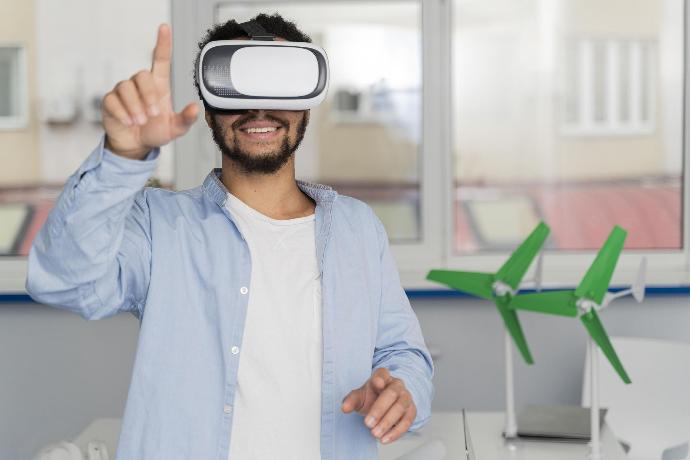Applying Virtual Reality in Aviation

The pandemic did put the aviation sector to its knees, especially the commercial airline businesses. Thankfully, vaccination has reduced the number of new infections and made it safer for people to travel once more. The sector has survived and is prepared to expand once more. In order to replace aging fleets and fulfill expanding needs, the European multinational aerospace manufacturer Airbus predicts demand for 39,000 aircraft over the next 20 years. It goes without saying that these aircraft require skilled and qualified staff to operate and maintain them. Leaders in the sector must have the vision to anticipate issues in the future and use new technology to address them.
One such technology that has significant potential for the aviation sector of the future is virtual reality or VR. One of the most fascinating immersive technologies, VR aims to improve human abilities and performance like never before. The availability and cost of VR technology and services have increased dramatically, benefiting both businesses and individual users. The magic of virtual reality is that it lets one explore and do things that they previously thought were either impossible or unaffordable. The remarkable developments in computer and communications technology have enabled the impossible.
All personnel involved in operations, maintenance, reliability, cabin duties, safety, emergency response, customer service, etc. can benefit from virtual reality training in the aviation industry. VR offers exceptional training, not just decent training. According to a PWC study, VR training is four times faster, boosts confidence, and provides improved retention. Many businesses and government organizations have started including virtual reality training in their aviation training programs and integrating the outcomes into already-existing learning management systems. The European Union Aviation Safety Agency has awarded the first-ever certificate for VR-based flight simulation training equipment. These tools are made to assist in teaching new and seasoned pilots how to become proficient in fundamental flight and emergency abilities.
The student is completely submerged in a VR cockpit that has all the controls found in a real helicopter. Since the training credit that students receive adds up to the training hours required for a pilot's license, this certification represents a significant milestone and recognition for VR flight training. In addition, Air France has collaborated on the development of a stand-alone VR Engine Run-Up training solution that will improve instruction in engine maintenance and operation. The total training sequence has been made more successful thanks to this VR aviation training solution, which has resulted in less time spent practicing in the flight simulator.
More sophisticated applications of virtual reality in pilot training include teaching students how to identify and deal with optical illusions that might influence pilots, including the runway width illusion. The illusion that the plane is higher than it actually causes pilots to descend on a runway that is somewhat narrower than usual, which causes them to make a lower approach than necessary. Similar to the last example, a wider-than-normal runway gives the pilot the impression that he is lower than he actually is, causing him to make an unnecessarily higher approach. Such delusions impair judgment, which carries significant hazards when landing a plane full of passengers, as is typically the case.
Virtual reality training is not just for pilots in the aviation sector. Since the cabin crew is essential to the efficient operation of all aircraft, training them can also be done using virtual reality. As opposed to what we used to call them, they are no longer air hostesses. The cabin crew has a variety of operational, security, safety, and emergency responsibilities.
